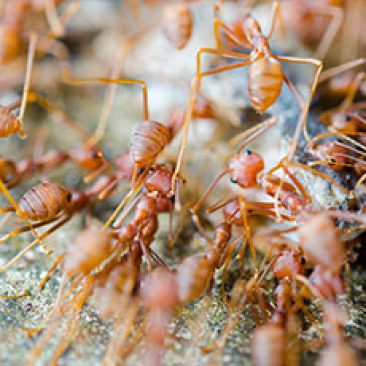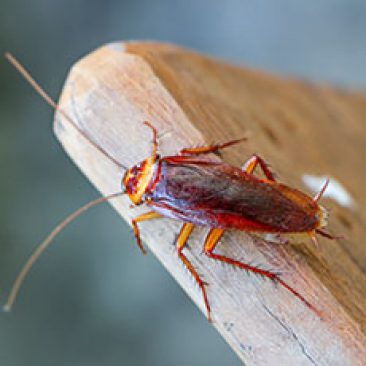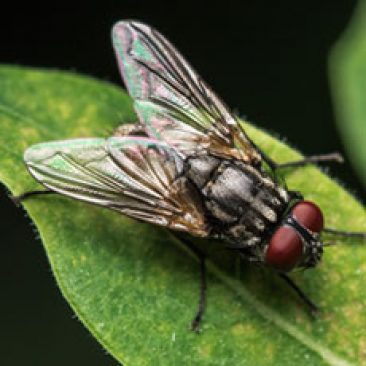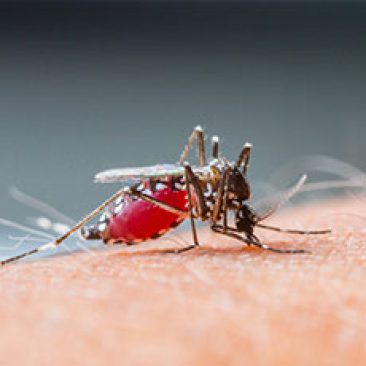Fly Control in Australia
We specialise in Fly control around your home or business interrupting their breeding cycles and culling the population you have flying around is what we do best! Flies belong to the Order Diptera. There are 98 different Australian families and 7786 different species of flies in Australia alone. Mozzies, house flies, bush flies and blowies all belong to this group. Regardless of what flies you’ve experiencing problems with, you can rely on Green Pesty to provide reliable fly control in Australia, making use of environmentally friendly products that are safe for kids and pets. We can assist with indoor and outdoor fly control to reduce fly numbers safely and effectively. In addition to flies, we can also provide assistance with mosquito prevention and mosquito control to get these pesky pests under control.
To Turn On Your War Against Pests, Reach Our Team Today!
House Flies
 Outdoor fly control
Outdoor fly controlAdult house flies are usually stocky and strongly bristled. There are 180 species in this family, with two of the most familiar being the Musca domestica (the cosmopolitan house fly) and Musca vetustissima (the bush fly). Both can be a great nuisance that necessitates residential or commercial fly control. Fortunately, the team at Green Pesty are well equipped to handle fly infestations of all sizes. Learn more about some of the most common types of flies we can help eradicate below, including house flies, bush flies, table flies and blow flies.
The Life Cycle of House Flies
The life cycle of the house fly is usually 2 to 4 weeks, but in summer when conditions are favourable, up to 12 generations can be produced. Over winter, flies will become inactive and hidden.
Here’s how the life cycle of house flies works:
- Within a week of reaching adulthood, a female adult fly lays batches of about 100 eggs in a material suitable for larval feeding. Warm, moist, organic materials are preferred.
- The tapered, maggot-shaped larvae may hatch within a day.
- Larvae molt about 4 times during feeding, which may last up to a week or even less in more favourable conditions.
- Once fed, the larvae usually crawl away from the moist food to find a drier location in which to pupate.
- The pupae remain immobile for up to a week, at which time the adult emerges.
To Turn On Your War Against Pests, Reach Our Team Today!
 More Information About House Flies
More Information About House Flies
- The house fly is probably the most annoying insect pest indoors and is found in most parts of Australia.
- Typically, the house fly alternates between materials that are likely to harbour disease causing organisms (e.g. animal excrement) and human foods, as well as utensils and food preparation surfaces, making indoor fly control just as important as outdoor fly control.
- They are known to transmit diseases such as typhoid, and the abundance of house flies in an area is sometimes used to indicate the efficiency of waste disposal and general sanitary standards of that region.
More Information About Bush Flies
- The bush fly is one of the most widely known and annoying flying pests in the outdoors during Australian summers, and is the main reason why people use personal insect repellent products and arrange fly control in Australia.
- The appearance of the bush fly is similar to the house fly, except it’s smaller in size. The lifecycle is also similar and usually takes about 2 to 5 weeks to complete.
- The adults seek large animals, including humans, and they remain on and around them for hours at a time, being attracted to sweat, tears, saliva and grazing animal faeces.
- Bush flies are known to play an active role in the transmission of certain eye infections to humans and livestock, and they may also serve in the transmission of enteric diseases to humans.
Table Flies
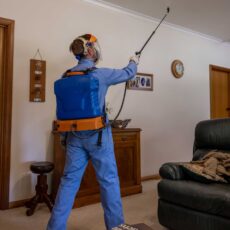
Some species of flies are predators as adults, and some, like the stable fly (Stomoxys calcitrans), are blood sucking. The stable fly is usually found around dairies and other intensive farming facilities, and biting and annoyance of livestock can reduce yields. The larvae of all these flies live in many different habitats, with dead and putrefying flesh, fungi and rotting vegetation being the most common.
Blow Flies
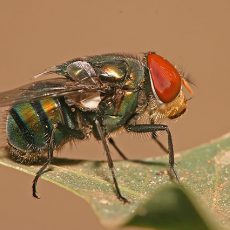 Outdoor fly control
Outdoor fly controlThere are 140 species of these small to medium sized flies. Many are metallic green or blue, while others are mixtures of brown and black. The larvae of most of these species develop in dead and putrefying flesh or dung, although there are species that are parasitic. Blow flies will usually lay their eggs in dead and putrefying flesh where the larvae will feed not only on the rotten flesh, but on the other larvae.
While many blowflies are beneficial by speeding up decomposition of carcasses, there are some economically important species which attack living animals. The most well-known is the introduced Lucilia cuprina which causes ‘blowfly-strike’ in sheep, when the larvae start feeding on inflamed skin under the wool and spread into the flesh. In these cases, commercial fly control is crucial to get the problem under control.
Book Effective Fly Control Today
Don’t put up with annoying flies and other pests any longer than necessary – call our team today for a prompt response. To learn more about our indoor and outdoor fly control, or to book our services, call our pest control experts today on 1800 815 730. We can also assist with services for other pests, making us an excellent choice when you’re wondering “where can I get trusted rodent control near me?”


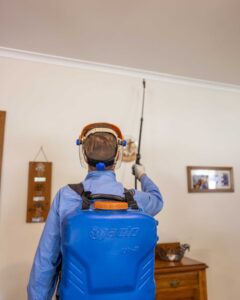
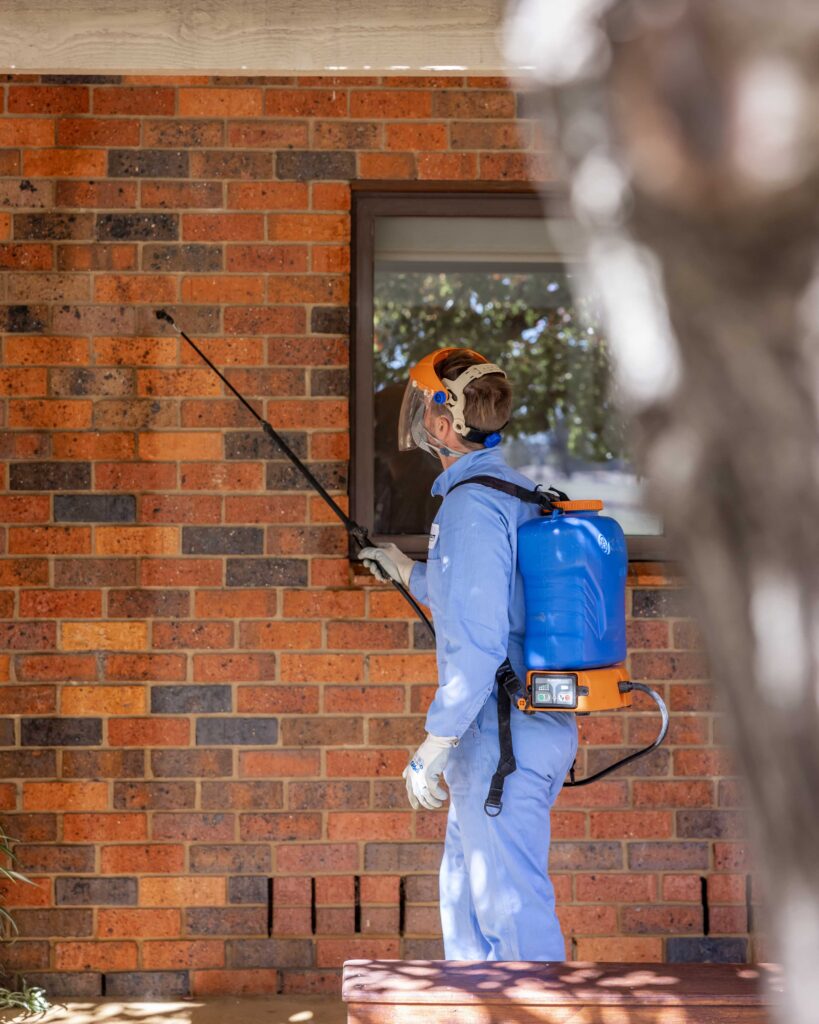 More Information About House Flies
More Information About House Flies